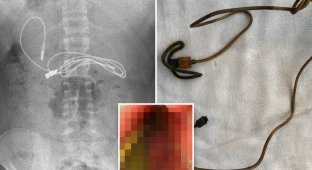In 2020, a Filipino resident tweeted a photo a huge bat hanging in his garage. Many did not believe that that this is a real animal and called the picture a fake. 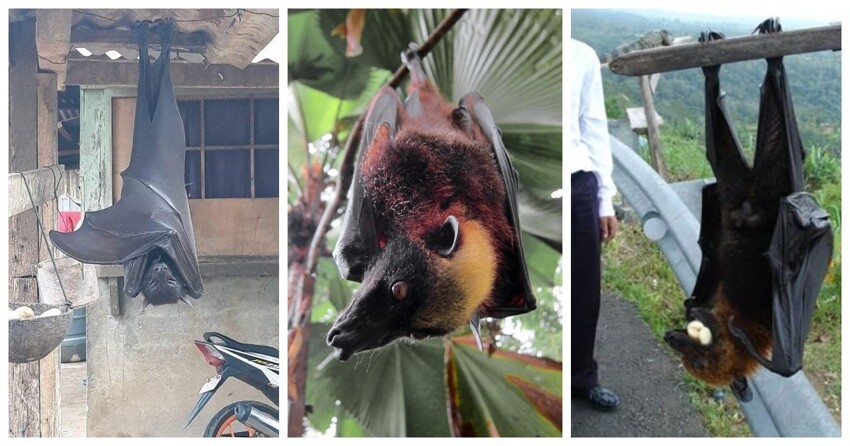
Yes, the picture was taken in such a way that the animal seems to be very large, the size of a person. But other than forced perspective, no cheating there is no. 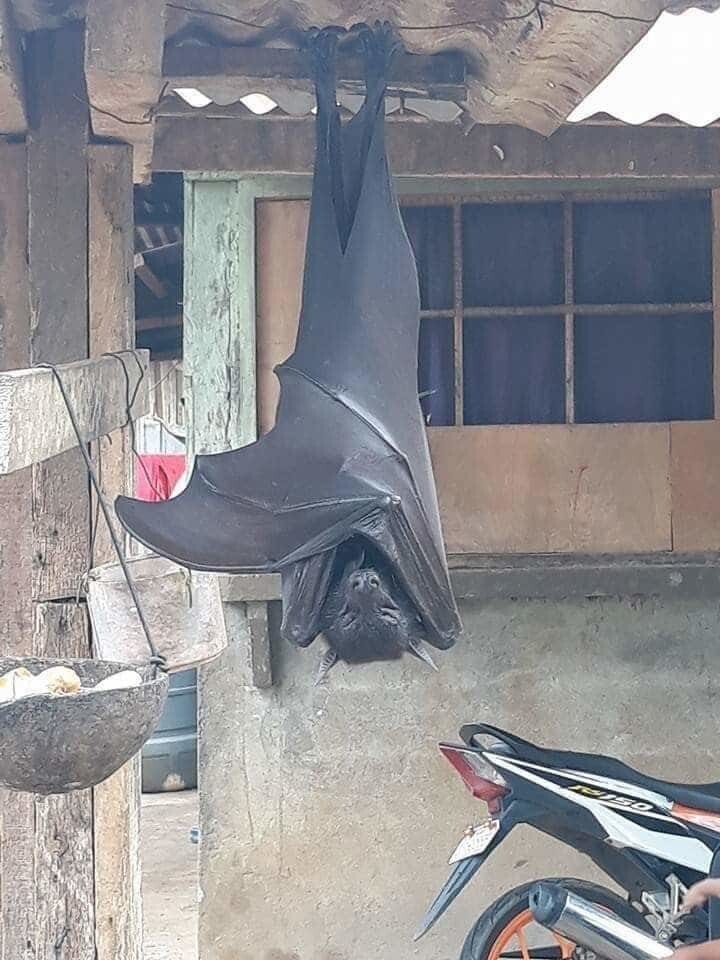
This is a mammal of the bat family that lives on Philippine archipelago. Its scientific name is maned acerodon. (Acerodon jubatus), and the common one is a giant winged fox with golden crown (Giant golden-crowned flying fox). 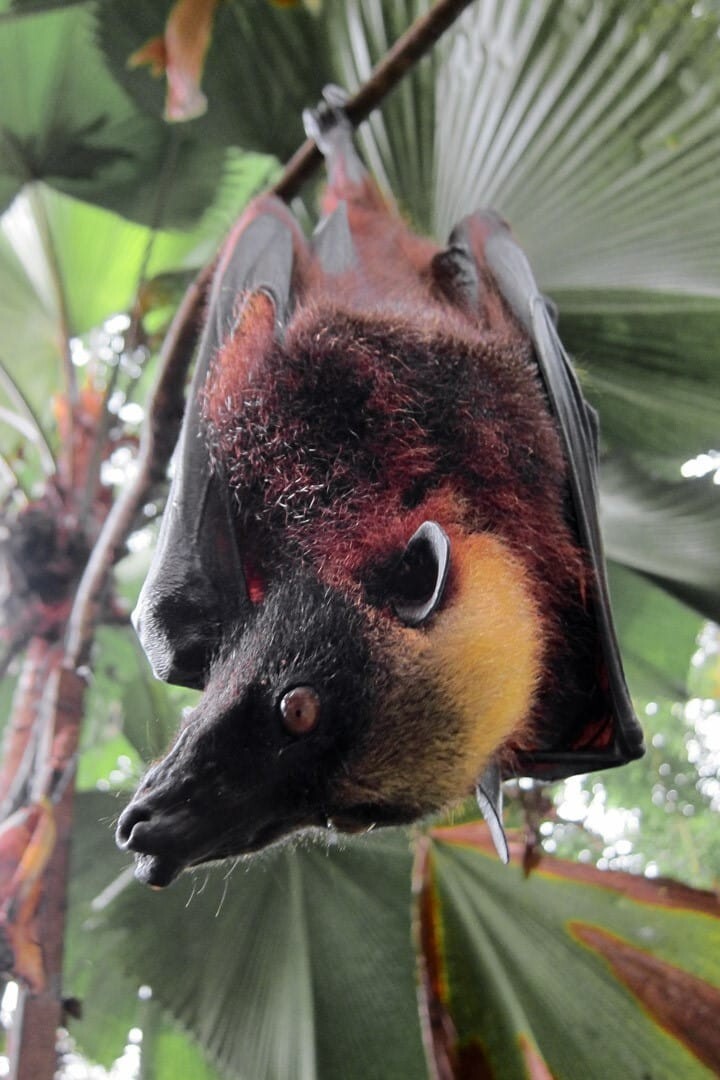
The length of the animal reaches half a meter, and its wingspan ranges from 1.5 to 1.7 m. An adult Acerodon can weigh up to 1.3 kg. At his elongated muzzle, similar to a dog, small ears, tail absent. The coat is dark, but on the head in the back of the head orange-yellow (hence the "golden crown" in the name). 
Maned acerodons live in colonies. Like most bats, they go in search of food at night and then sleep during the day. They feed on plant foods - leaves and sweet fruits, especially respect figs. In the wild, they can live from 10 to 30 years. About them little is known about reproduction, except that females give birth on one cub at a time and they have one litter a year.
And although photographs taken with the intent to exaggerate the size of acerodon, can scare an impressionable person, little animals it's completely harmless. People are not interested. 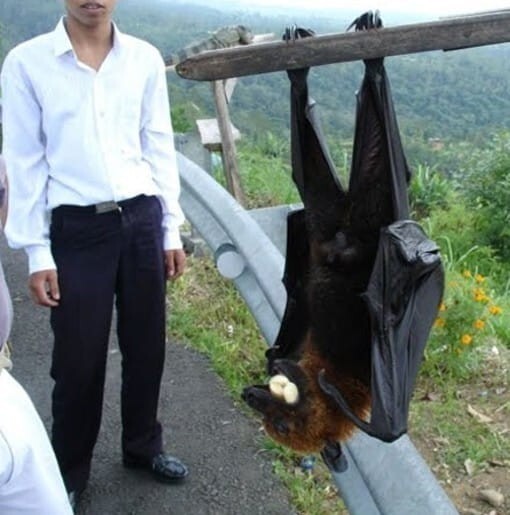
The species is under threat of extinction. Main Enemies acerodons are large birds of prey such as eagles. They are also hunted reticulated pythons and unfortunately the people who use them as bait for hunting wild animals. Great damage to habitat acerodons are also caused by deforestation. 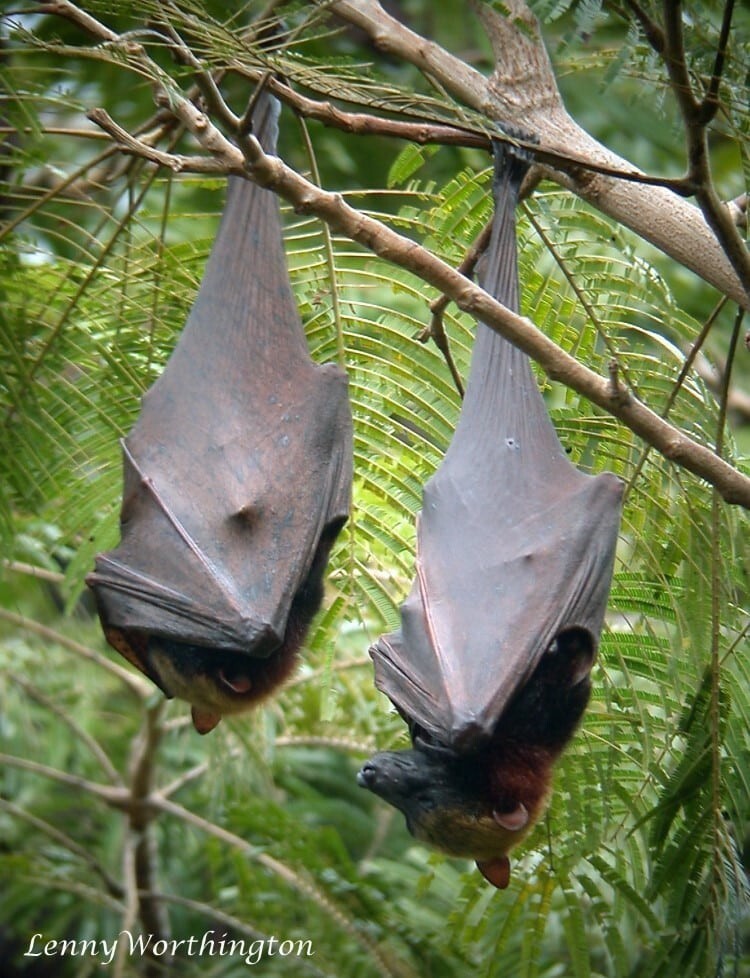
In the late 1800s, giant flying fox colonies numbered up to 100,000 individuals. Today, the entire population does not exceed 20 000 individuals. One of the three subspecies of acerodon is already completely extinct, therefore, it is important to take care of the remaining subspecies. They have important value for the ecosystem - regulate the number of insects, disperse seeds, pollinate plants. 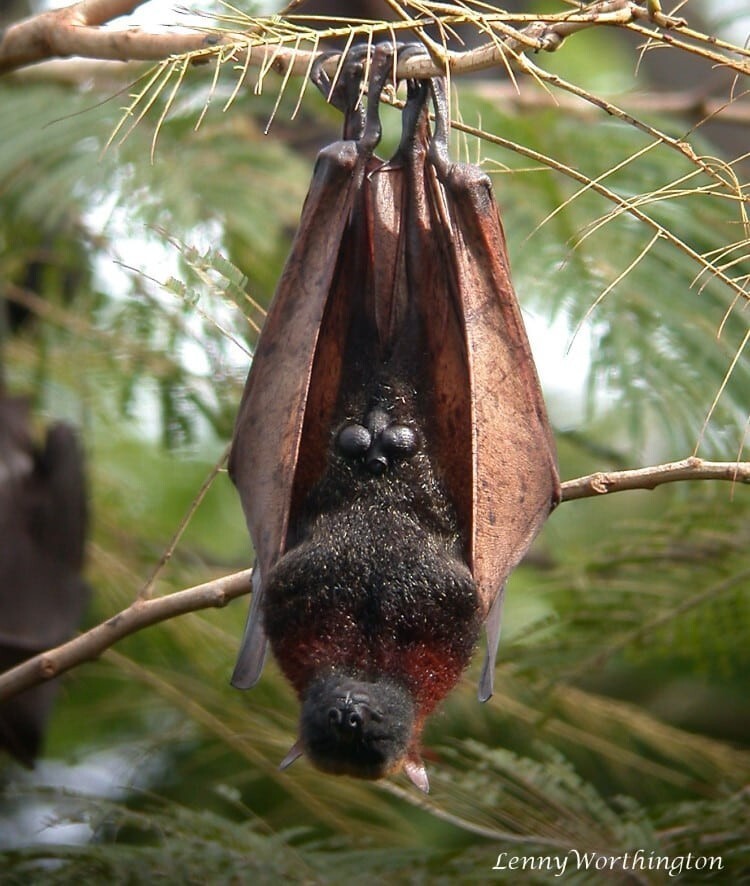
Add your comment
You might be interested in:



















